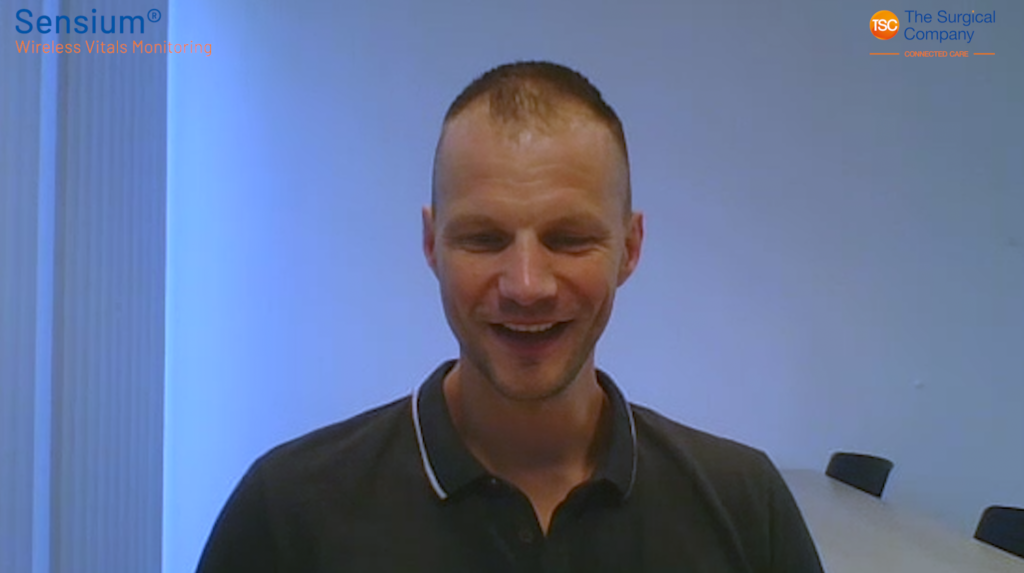Summary
During the course of surgical interventions, complications mostly occur in the postoperative period. On the normal ward, vital signs such as heart rate, respiratory rate and temperature are recorded every 4-8 hours. Even if the observations are every 2 hours and the collection of vital signs takes 10 minutes, the patient is only monitored for 120 min per 24 h and accordingly remains unobserved on the standard ward 22 of 24 h postoperatively.
The usual measurement of vital parameters by the nursing staff also possibly leads to a wake-up effect in the patient: Firstly by entering the room and collecting vital parameters, the patient is awakened. The respiratory rate increases, with possible changes in oxygen saturation. Secondly heart rate and blood pressure will often be elevated, compared to an unobserved period. This results in different readings than they had a few minutes before entering the room.
New wireless monitoring systems are available to continuously register some vital signs using a portable sensor and to identify any deviations in the form of alerts / alarms for the staff.
‘SensiumVitals® (Sensium Healthcare, Abingdon, UK) is a patch attached to 2 standard electrocardiogram electrodes that measures cardiac and respiratory rates and, using a sensor in the axilla, measures the patient’s body temperature. Granholm et al. [ 17] compared 3 methods of respiratory rate measurement: I. a standard method – an observer measures the respiratory rate at a random moment for 60 seconds in a patient who is breathing calmly during a 5-min period; II. Routine survey by the nursing staff and III. Using the SensiumVitals® wireless patch. For the respiratory rate, a reliable signal was registered only in 50% of the time points, which could be due to the highly sensitive measurement method of impedance pneumography, which is very sensitive to movement. At the times when a valid respiratory rate signal was measured, the agreement of the measured respiratory rate with the values obtained by standard measurement, apart from outliers, was acceptable [ 17]. However, the values of the respiratory rate obtained with the patch differed considerably from the routine measurements of the nursing staff.
Research has shown that routinely performed measurement of the vital parameters by the (nursing) staff is not always reliable. When registering the respiratory rate by the (nursing) staff, preference was given to the values 18, 20, 22 and 24, with 50% of the patients having a respiratory rate of 20 / min [ 3 ]. Also in the previously cited work by Granholm et al. [ 17], a preference for respiratory rates 16, 18 and 20 / min was observed in routine measurements. The correspondence of these measurements with the standard measurement methods described above (an observer measures the respiratory rate in a patient with calm breathing at an arbitrary moment for 60 s in a 5-min period) was correspondingly poor. Thus, it is not surprising that the routine measurements have a very poor agreement with the data obtained by the continuously measuring patch.
In another work, both the respiratory and heart rate, as measured by the SensiumVitals® sensor, were compared to standard monitor readings [ 20 ]. The mean deviation between the measurement methods was 1 heartbeat/min and less than 1 breath/min.





